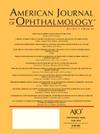穿透性角膜移植术与板层内皮角膜移植术治疗虹膜角膜内皮综合征的疗效:系统回顾和荟萃分析。
IF 4.1
1区 医学
Q1 OPHTHALMOLOGY
引用次数: 0
摘要
目的比较穿透性角膜移植术(PK)、剥脱性角膜内皮移植术(DSEK)和膜性角膜移植术(DMEK)治疗虹膜角膜内皮(ICE)综合征的手术效果。设计对个体患者数据(IPD)进行系统回顾和荟萃分析。方法在PROSPERO数据库中进行预注册(注册号:CRD42024539444)。从Embase、MEDLINE(通过PubMed)和Cochrane中央对照试验注册中心(Central)检索到2024年4月24日的符合条件的研究。研究纳入了那些报告了PK、DSEK或DMEK后的临床结果的研究——ICE综合征患者的移植物存活、最佳眼镜矫正视力(BSCVA)和内皮细胞密度(ECD)。采用Cochrane手册进行数据提取/合成,采用非随机干预研究的偏倚风险(ROBINS-I)和Joanna Briggs研究所关键评估清单评估偏倚风险。采用随机效应模型进行meta分析。采用q检验和I2统计量评估研究间的异质性。结果1963年筛选的研究中有19项纳入meta分析。基于至少10例IPD的多变量合并Kaplan-Meier曲线(95%置信区间)显示,ICE综合征患者PK后的移植物存活率优于DSEK。PK [-0.77 (95% CI, -1.45至-0.09)]、DSEK [-0.87 (95% CI, -1.35至-0.39)]和DMEK [-0.85 (95% CI, -1.07至-0.62)]对BSCVA的改善无显著差异(p=0.92)。DSEK组与DMEK组术后6 (p=0.88)和12个月(p=0.33)的ECD无显著差异。IPD分析显示,任何时间青光眼患者与非任何时间青光眼患者的移植物存活率无显著差异(-0.04±0.50 SEM;p=0.940)或白内障手术(-0.45±0.40 SEM;p = 0.265)。与DSEK相比,spk在ICE患者中表现出更好的移植物存活率,然而,需要进一步的研究和更多的证据来得出更明确的结论。PK、DSEK和DMEK对BSCVA的改善具有可比性。青光眼手术,无论是在角膜移植术之前还是之后,似乎对移植物的存活没有显著影响。本文章由计算机程序翻译,如有差异,请以英文原文为准。
Outcomes of Penetrating Keratoplasty vs Lamellar Endothelial Keratoplasty in Iridocorneal Endothelial Syndrome: A Systematic Review and Meta-Analysis.
PURPOSE
To compare surgical outcomes following penetrating keratoplasty (PK), Descemet stripping endothelial keratoplasty (DSEK), and Descemet membrane endothelial keratoplasty (DMEK) in patients with iridocorneal endothelial (ICE) syndrome.
DESIGN
Systematic review and meta-analysis on individual patient data (IPD).
METHODS
Pre-registration was performed in the PROSPERO database (registration number: CRD42024539444). Eligible studies from Embase, MEDLINE (via PubMed), and the Cochrane Central Register of Controlled Trials (CENTRAL) were retrieved up to April 24, 2024. Studies were included those reporting clinical outcomes after PK, DSEK, or DMEK- graft survival, best spectacle-corrected visual acuity (BSCVA) and endothelial cell density (ECD) - in people with ICE syndrome. Cochrane Handbook was followed for data extraction/ synthesis, and the Risk of Bias in Non-randomized Studies of Interventions (ROBINS-I) and the Joanna Briggs Institute Critical Appraisal Checklists were used to assess risk of bias. Meta-analyses were conducted using a random-effects model. Heterogeneity between studies was assessed using Q-test and I2 statistics.
RESULTS
Nineteen of the 1963 screened studies were included in the meta-analysis. Multivariate pooled Kaplan-Meier curves with 95% confidence intervals, based on IPD from studies with at least 10 cases indicated that graft survival was better after PK compared to DSEK in patients with ICE syndrome. No significant difference (p=0.92) was found in BSCVA improvement between PK [-0.77 (95% CI, -1.45 to -0.09)], DSEK [-0.87 (95% CI, -1.35 to -0.39)] and DMEK [-0.85 (95% CI, -1.07 to -0.62)]. No significant differences in ECD were observed between DSEK and DMEK 6 (p=0.88) and 12 months (p=0.33) postoperatively. IPD analysis revealed no significant difference in graft survival between patients with and without anytime glaucoma (-0.04 ± 0.50 SEM; p=0.940) or cataract surgery (-0.45 ± 0.40 SEM; p=0.265).
CONCLUSIONS
PK demonstrated better graft survival compared to DSEK in patients with ICE, however, further research and additional evidence are needed to draw more definitive conclusions. Improvements in BSCVA were comparable across PK, DSEK and DMEK. Glaucoma surgery, whether performed before or after keratoplasty, appear to have no significant impact on graft survival.
求助全文
通过发布文献求助,成功后即可免费获取论文全文。
去求助
来源期刊
CiteScore
9.20
自引率
7.10%
发文量
406
审稿时长
36 days
期刊介绍:
The American Journal of Ophthalmology is a peer-reviewed, scientific publication that welcomes the submission of original, previously unpublished manuscripts directed to ophthalmologists and visual science specialists describing clinical investigations, clinical observations, and clinically relevant laboratory investigations. Published monthly since 1884, the full text of the American Journal of Ophthalmology and supplementary material are also presented online at www.AJO.com and on ScienceDirect.
The American Journal of Ophthalmology publishes Full-Length Articles, Perspectives, Editorials, Correspondences, Books Reports and Announcements. Brief Reports and Case Reports are no longer published. We recommend submitting Brief Reports and Case Reports to our companion publication, the American Journal of Ophthalmology Case Reports.
Manuscripts are accepted with the understanding that they have not been and will not be published elsewhere substantially in any format, and that there are no ethical problems with the content or data collection. Authors may be requested to produce the data upon which the manuscript is based and to answer expeditiously any questions about the manuscript or its authors.

 求助内容:
求助内容: 应助结果提醒方式:
应助结果提醒方式:


